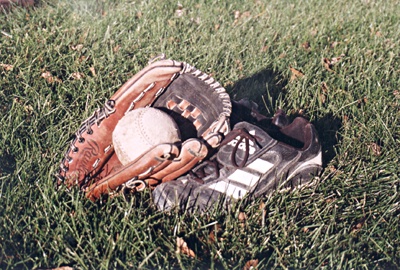All Nonfiction
- Bullying
- Books
- Academic
- Author Interviews
- Celebrity interviews
- College Articles
- College Essays
- Educator of the Year
- Heroes
- Interviews
- Memoir
- Personal Experience
- Sports
- Travel & Culture
All Opinions
- Bullying
- Current Events / Politics
- Discrimination
- Drugs / Alcohol / Smoking
- Entertainment / Celebrities
- Environment
- Love / Relationships
- Movies / Music / TV
- Pop Culture / Trends
- School / College
- Social Issues / Civics
- Spirituality / Religion
- Sports / Hobbies
All Hot Topics
- Bullying
- Community Service
- Environment
- Health
- Letters to the Editor
- Pride & Prejudice
- What Matters
- Back
Summer Guide
- Program Links
- Program Reviews
- Back
College Guide
- College Links
- College Reviews
- College Essays
- College Articles
- Back
The Question of the Robo-Ump
Seven years ago, Detroit Tigers pitcher Armando Galarraga was pitching a gem against the Cleveland Indians. In fact, it was the best outing of his career, as he was one out away from making history by pitching a perfect game. The ninth hitter in the Indians order came up to the plate for the third time, determined to be the first of his teammates to reach base that afternoon. However, he hit a grounder to Miguel Cabrera, who filled the gap near second base, scooped the ball up, and threw it to Galarraga at first with time to spare. Alas, first base ump Jim Joyce did not seem to think so, and exclaimed “safe!”, making one of the most costly bad calls in recent history, and robbing poor Galarraga of his perfect game. Botched calls like this one are obviously a part of the game, but since we now have the technology capable of reducing their frequency, we should use it to our advantage.
As the MLB takes over the sports world while football, basketball, and hockey take off for the summer, it is a good time to consider the future of the game that we, as sports fans, will become even more enveloped in for the next few months. The world of baseball must soon make a decision on the issue of implementing new technology to be used for officiating the game. Some steps have already been taken to improve the game through the introduction of instant replay, which Galarraga surely must support, but the Pitchf/x technology, which is already used in television broadcasts, could one day replace human umpires in calling an accurate strike zone. This would strengthen the current replay agreement astronomically, as it does not allow for the overturning of called balls and strikes as of right now.
It should not come as a surprise to many fans that umpires are never perfect. However, we sometimes fail to realize how biased they can be when it comes to borderline calls. According to a study conducted by Etan Green of fivethirtyeight, more often than not, an umpire hesitates to call a third strike, fourth ball, or second strike in a row, adjusting the strike zone appropriately. It is clear that the strike zone shifts, from batter to batter, umpire to umpire, and count to count, but the issue is whether or not this shift should be corrected or if it is just a part of the game. I believe that it must be corrected.
For those who are concerned that automated strike zones would remove the human element of the game, what is there to fear, really? To soften the abruptness of the potential transition, human umpires could simply make the call fed to them, via earpiece, by a computer. Former MLB player Eric Byrnes acted as an umpire in a minor league game fairly recently, and used this technique to call the computer’s balls and strikes in order to appease the fans. According to Jacob Shafer of Bleacher Report, it was a success. Also, electronic call-making is not a brand-new concept to professional sports. Professional tennis tournaments have been using computers to verify calls made for years now, and more affordable models, according to Phoebe Weston, will hit the market soon to be used for amatuer or recreational play. Tennis players and fans have accepted that the lack of another human presence on the court (besides the human players, mind you) is okay as long as calls are more accurate.
Therefore, the “robo-ump” should be on its way into professional baseball soon. There is no excuse not to use the most advanced technology possible to ensure the accuracy of calls. Games have been, can be, and will be turned on their heads by a single “strike”, “ball”, “safe”, or “out”, so why should we continue to accept the fact that some of these critical calls are complete mistakes? Instant replay was a step in the right direction, and baseball should continue down that path with the implementation of the automated strike zone. However, as Dylan Gwinn has reported, current commissioner Rob Manfred sees no hurry to include this technology in the game, so it could be at least five or ten years before it makes its way into the MLB. Meanwhile, it will continue to be tried out in the minor leagues and below, and will hopefully gain more supporters in no time at all.

Similar Articles
JOIN THE DISCUSSION
This article has 0 comments.

I am a huge fan of baseball, and the evolution of the game is something that is very interesting to me. I also read, watch, and listen to a good amout of sports commentary in my free time, so when I was asked to exmeriment with a creative piece in a genre of my choice, I chose sports writing. This is the result of my research and writing.